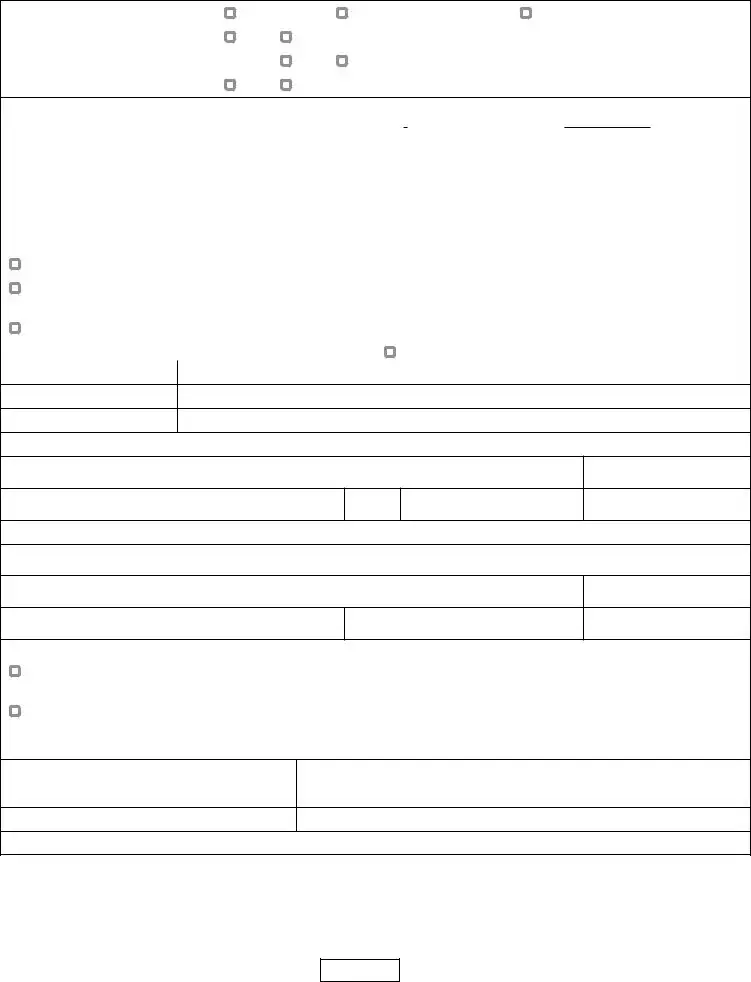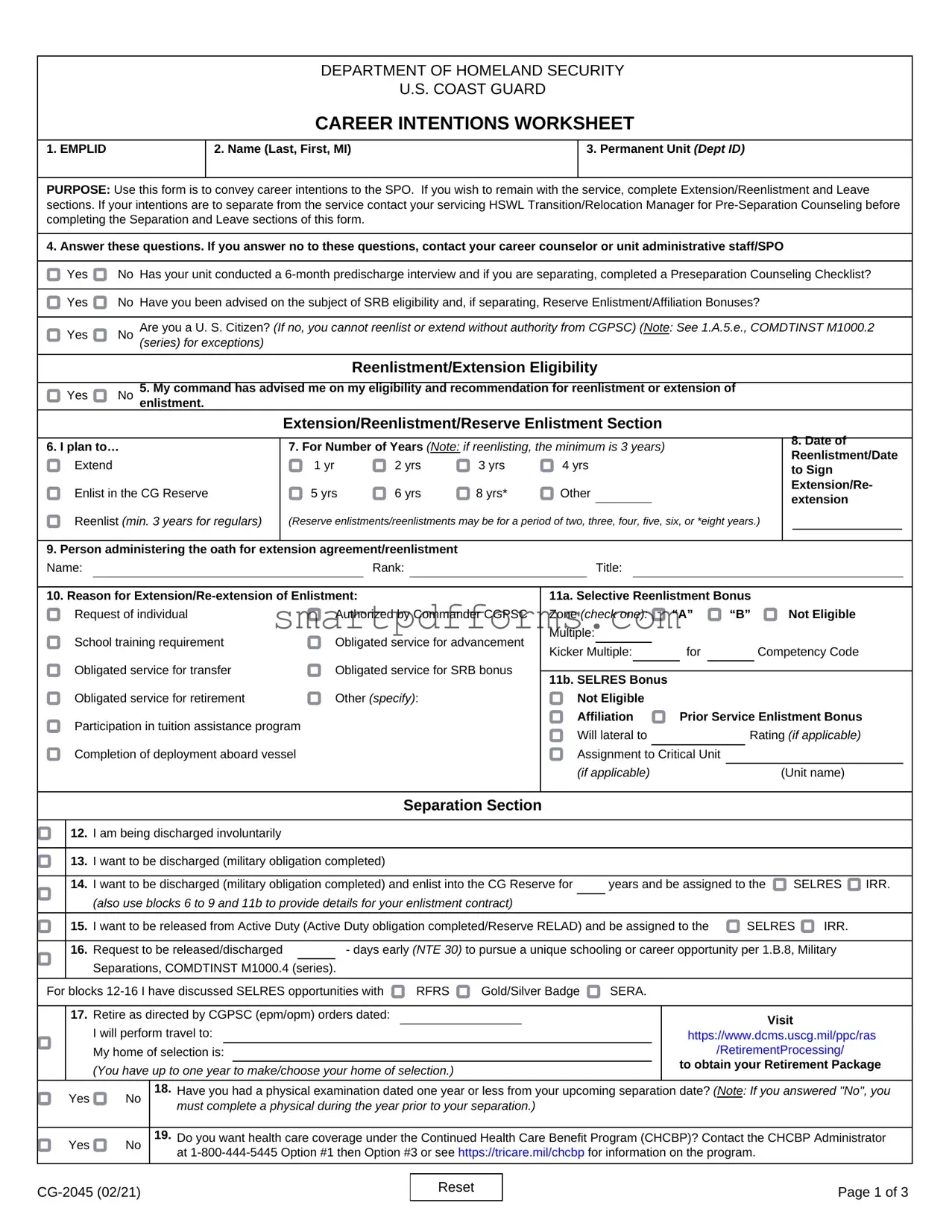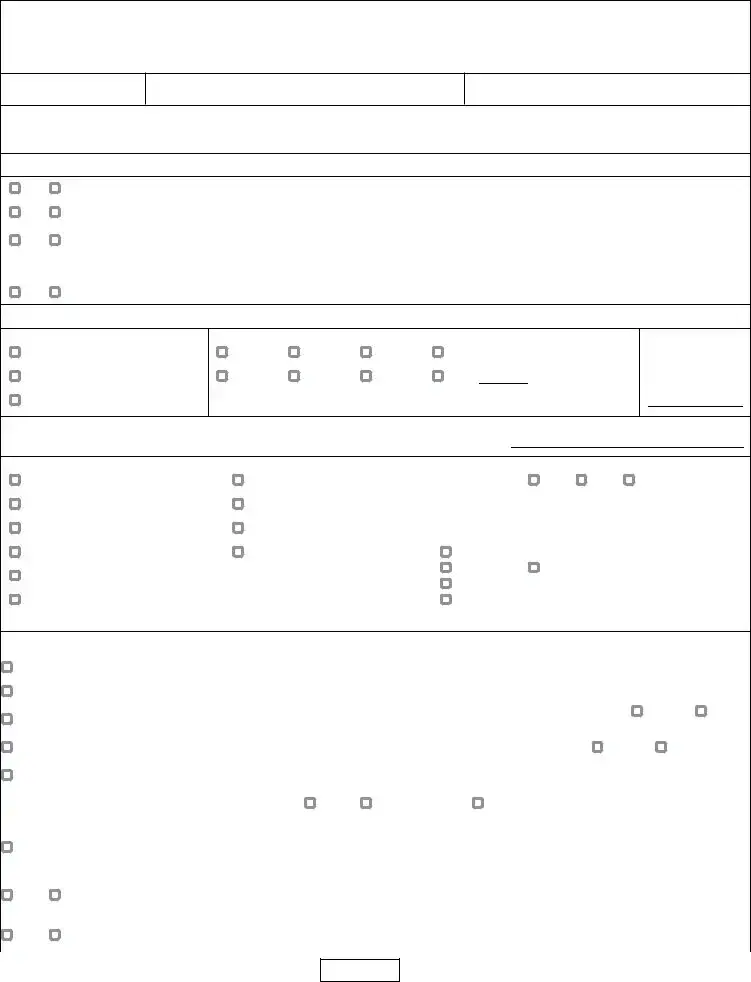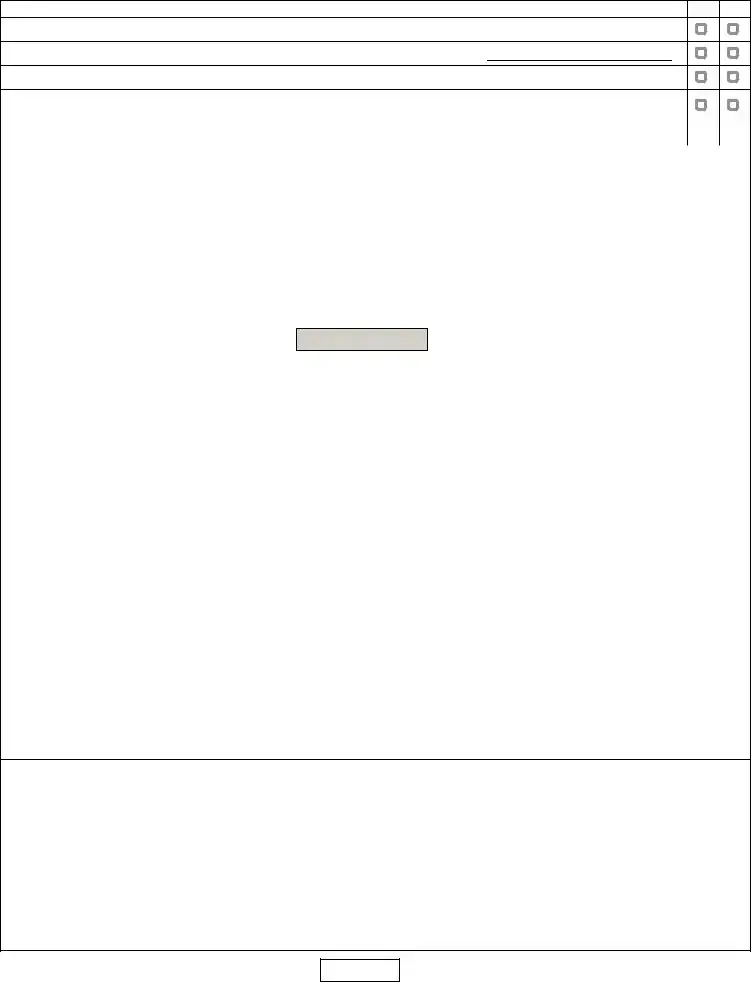DEPARTMENT OF HOMELAND SECURITY
U.S. COAST GUARD
CAREER INTENTIONS WORKSHEET
2. Name (Last, First, MI)
3. Permanent Unit (Dept ID)
PURPOSE: Use this form is to convey career intentions to the SPO. If you wish to remain with the service, complete Extension/Reenlistment and Leave sections. If your intentions are to separate from the service contact your servicing HSWL Transition/Relocation Manager for Pre-Separation Counseling before completing the Separation and Leave sections of this form.
4. Answer these questions. If you answer no to these questions, contact your career counselor or unit administrative staff/SPO
Yes |
No Has your unit conducted a 6-month predischarge interview and if you are separating, completed a Preseparation Counseling Checklist? |
|
|
|
Yes |
No |
Have you been advised on the subject of SRB eligibility and, if separating, Reserve Enlistment/Affiliation Bonuses? |
|
|
|
Yes |
No |
Are you a U. S. Citizen? (If no, you cannot reenlist or extend without authority from CGPSC) (Note: See 1.A.5.e., COMDTINST M1000.2 |
|
|
(series) for exceptions) |
|
|
|
|
|
Reenlistment/Extension Eligibility |
|
|
|
Yes |
No |
5. My command has advised me on my eligibility and recommendation for reenlistment or extension of |
enlistment. |
Extension/Reenlistment/Reserve Enlistment Section
6. I plan to…
Extend
Enlist in the CG Reserve
Reenlist (min. 3 years for regulars)
7.For Number of Years (Note: if reenlisting, the minimum is 3 years)
1 yr |
2 yrs |
3 yrs |
4 yrs |
5 yrs |
6 yrs |
8 yrs* |
Other |
(Reserve enlistments/reenlistments may be for a period of two, three, four, five, six, or *eight years.)
8.Date of Reenlistment/Date to Sign Extension/Re- extension
9. Person administering the oath for extension agreement/reenlistment
10. Reason for Extension/Re-extension of Enlistment:
Request of individual |
Authorized by Commander CGPSC |
School training requirement |
Obligated service for advancement |
Obligated service for transfer |
Obligated service for SRB bonus |
Obligated service for retirement |
Other (specify): |
Participation in tuition assistance program |
|
Completion of deployment aboard vessel |
|
11a. Selective Reenlistment Bonus |
|
|
Zone (check one): |
“A” |
“B” |
Not Eligible |
|
Multiple: |
|
|
|
|
|
|
|
|
|
|
|
|
|
|
|
|
|
|
|
Kicker Multiple: |
|
for |
|
|
Competency Code |
|
|
|
|
|
|
|
|
|
|
|
|
|
|
|
|
|
|
|
11b. SELRES Bonus |
|
|
|
|
|
|
|
Not Eligible |
|
|
|
|
|
|
|
Affiliation |
Prior Service Enlistment Bonus |
|
Will lateral to |
|
|
|
|
Rating (if applicable) |
|
|
|
|
|
|
|
Assignment to Critical Unit |
|
|
|
|
|
|
|
|
|
|
|
|
(if applicable) |
|
|
|
|
|
(Unit name) |
|
|
|
|
|
|
|
|
|
|
|
|
|
Separation Section
|
12. |
I am being discharged involuntarily |
|
|
|
|
|
|
|
|
|
|
|
|
|
|
|
|
|
|
|
|
|
|
|
|
|
|
|
|
13. |
I want to be discharged (military obligation completed) |
|
|
|
|
|
|
|
|
|
|
|
|
|
|
|
|
|
|
|
|
|
14. |
I want to be discharged (military obligation completed) and enlist into the CG Reserve for |
years and be assigned to the |
SELRES |
IRR. |
|
|
|
|
|
|
|
|
|
|
|
|
|
|
|
|
|
|
|
(also use blocks 6 to 9 and 11b to provide details for your enlistment contract) |
|
|
|
|
|
|
|
|
|
|
|
|
|
|
|
|
|
15. |
I want to be released from Active Duty (Active Duty obligation completed/Reserve RELAD) and be assigned to the |
SELRES |
IRR. |
|
|
|
|
|
|
|
|
|
|
16. |
Request to be released/discharged |
|
|
- days early (NTE 30) to pursue a unique schooling or career opportunity per 1.B.8, Military |
|
|
|
Separations, COMDTINST M1000.4 (series). |
|
|
|
|
|
|
|
|
|
|
|
|
|
|
|
|
|
|
|
|
|
|
|
|
For blocks 12-16 I have discussed SELRES opportunities with |
RFRS |
Gold/Silver Badge |
SERA. |
|
|
|
|
|
|
|
|
|
|
|
|
|
|
|
|
|
|
|
|
17. |
Retire as directed by CGPSC (epm/opm) orders dated: |
|
|
|
|
|
|
|
|
Visit |
|
|
|
|
I will perform travel to: |
|
|
|
|
|
|
|
|
https://www.dcms.uscg.mil/ppc/ras |
|
|
My home of selection is: |
|
|
|
|
|
|
|
|
/RetirementProcessing/ |
|
|
|
|
|
|
|
|
|
|
|
|
|
|
|
|
|
to obtain your Retirement Package |
|
|
(You have up to one year to make/choose your home of selection.) |
|
|
|
|
|
|
|
|
|
|
|
|
|
|
|
|
|
|
|
|
|
|
|
|
Yes |
No |
18. |
Have you had a physical examination dated one year or less from your upcoming separation date? (Note: If you answered "No", you |
|
|
must complete a physical during the year prior to your separation.) |
|
|
|
|
|
|
|
|
|
|
|
|
|
|
|
|
|
|
|
|
|
|
|
|
|
|
Yes |
No |
19. |
Do you want health care coverage under the Continued Health Care Benefit Program (CHCBP)? Contact the CHCBP Administrator |
|
|
at 1-800-444-5445 Option #1 then Option #3 or see https://tricare.mil/chcbp for information on the program. |
|
|
|
|
|
|
|
|
|
|
|
|
|
|
|
|
|
|
|
|
|
|
|
|
|
|
|
|
|
|
|

20. |
If Disch/Relad I will perform travel to my: |
Home of Record |
Place of Enlistment/Acceptance |
Will not be moving |
|
|
|
|
|
|
|
21. |
Mode of travel will be (check one) : |
POC |
Gov't Ticket |
|
|
|
|
|
|
|
|
|
|
22. |
I request advance travel SF Form 1038 is attached: |
Yes |
No |
|
|
|
|
|
|
|
|
|
|
|
23. |
Do you occupy government quarters? |
Yes |
No |
If yes, enter date you will terminate quarters: |
|
|
|
|
|
|
|
|
|
|
|
24.LEAVE SECTION (Complete for Separations, reenlistments and first extensions of enlistment)
•If your leave plans change after completing this worksheet, immediately notify your SPO. Failure to do so may result in an overpayment for which you will be responsible.
•Regular, Active Duty, members are only authorized to sell a TOTAL of 60 days leave during their career. The 60-day career limitation does not apply to Reservists and Retirees recalled to AD for a contingency operation or Reservists on AD for 31-365 days.
•If separating from the regular component you must use or sell all leave. Reservists being released from Active Duty and resuming SELRES status may carry unused or unsold leave forward.
•If you are reenlisting or extending, unused leave will automatically be carried forward into your new service obligation.
I plan to (select any that apply):
sell |
|
days of leave and/or carryover |
|
days leave |
|
|
|
|
|
|
|
take terminal leave starting (date): |
|
|
(Note: Member/Unit, do not enter terminal leave in the DA Self-Service Absence Request. |
|
|
|
|
|
|
|
Terminal leave will be recorded by the SPO on the separation transaction or, for discharges, the non Self-Service Absence Request.)
take leave prior to my separation for periods listed below (Note: Member/Unit must input the following periods in DA Self-Service Absence Request)
Enter inclusive leave dates (continue on separate page if necessary): |
more leave dates on separate page |
|
|
|
From |
To |
|
25. If separating, enter your final mailing address (This is where your W-2 will be mailed next year):
26. If separating, enter name and address of a relative to be contacted if you cannot be reached at the final mailing address:
Name
27. FOR RETIREMENT ONLY:
I have been authorized by CGPSC EPM/OPM and my Command to utilize retirement processing station permissive orders IAW COMDTINST M1000.4 (series) Art 1.C.1.e.
I have been approved by my command to utilize 20 (30 if OUTCONUS) days permissive temporary duty IAW COMDTINST M1000.4 (series) Art 1.C.1.f.
Use in the following order: Permissive temporary duty, processing point permissive orders, and terminal leave.
Contact your admin office for assistance in determining your departure date when using any combination of the above.
Permissive Temp Duty*: |
From |
To |
Processing Point*: |
From |
To |
Terminal Leave Dates: |
From |
*(Note: Do not input these dates on the retirement transaction or leave transaction in Direct-Access.)
I request Copy 4 of my DD-214
I request Copy 3 of my DD-214 be sent to the Office of Veterans Affairs. If YES, enter state/locality:
I request a duplicate of Copy 3 of my DD-214 be sent to the Central Office of the Department of veterans Affairs.
I want my e-mail address and telephone number entered in the remarks block of my DD-214 to allow contact by agencies receiving copies of the DD Form 214.
If YES, enter E-Mail address: |
|
and Phone Number: |
|
|
|
|
|
|
|
|
|
|
|
|
|
|
|
|
|
|
|
|
|
|
|
|
|
|
|
|
|
|
|
|
|
29. |
Member’s Signature |
29a. Date |
30. |
Supervisor’s Signature |
|
|
30a. Date |
|
|
|
|
|
|
|
|
|
31. |
Division/Branch Chief Signature |
31a. Date |
32. |
Department Head Signature |
|
|
32a. Date |
|
|
|
|
|
|
|
33. Command Approval |
33a. Date |
34. For SPO Use Only |
|
|
|
|
|
|
|
|
|
|
|
|
|
Action Completed on |
By (Initials) |
|
|
|
|
|
|
|
|
|
|
PRIVACY ACT STATEMENT
Pursuant to 5 U.S.C. §552a(e)(3), this Privacy Act Statement serves to inform you of why DHS is requesting the information on this form.
AUTHORITY: 37 U.S.C. §474, 10 U.S.C. Ch 58, 10 U.S.C. Ch 59, 10 U.S.C. Ch. 63, and 10 U.S.C. §508, and Joint Travel Regulations, Military Separations Manual, COMDTINS M1000.4, Enlistments, Evaluations, and Advancements, COMDTINST M1000.2, and Coast Guard Pay Manual COMDTINST M7220.29.
PURPOSE: Information is to convey your career intentions to USCG officials for processing your separation from or retention in the service.
ROUTINE USES: Authorized USCG officials will use this information process a member's retention in or separation from the service. Any external disclosures of information within this record will be made in accordance with DHS/USCG-014, Military Pay and Personnel, 76 Federal Register 66933 (October 28, 2011).
CONSEQUENCES OF FAILURE TO PROVIDE INFORMATION: Providing this information is voluntary. However, without disclosure of this information the member's career intentions may not be known which may cause document processing and pay problems.



